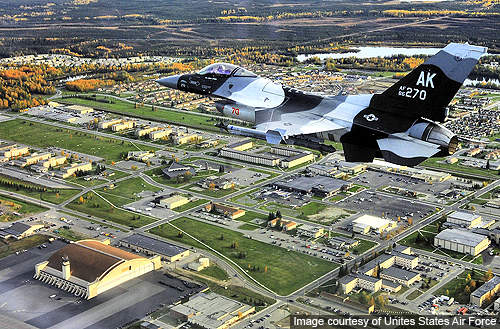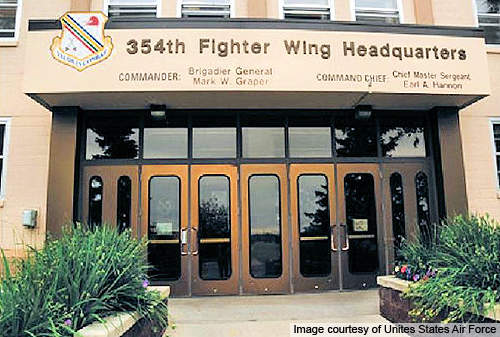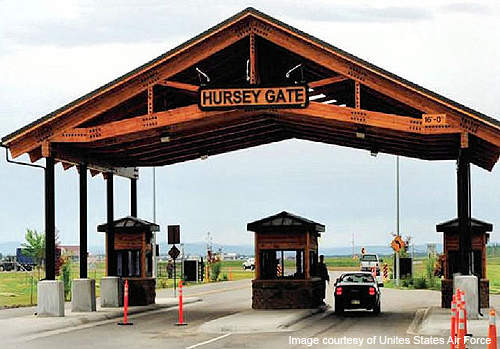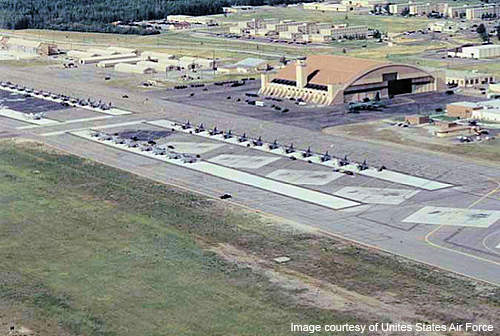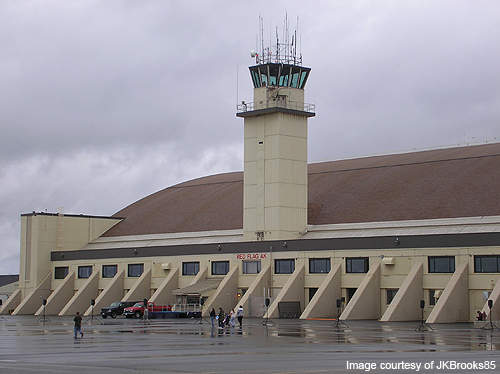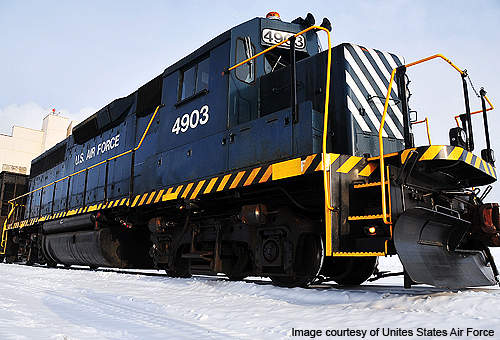Eielson Air Force Base (IATA code: EIL) is a military fighter base situated 42km south-east of Fairbanks, Alaska, in the US. It is part of the Pacific Air Forces (PACAF).
Built on a 600 acre site, the base is owned and operated by the United States Air Force (USAF). About 6,900 personnel are residing at the base.
Eielson base history
The western defence command proposed a plan in June 1943 to build a new airfield under the name Ladd Army Airfield (LAA) to meet the requirements imposed by World War II.
Construction of the LAA began in August 1943 and was completed in October 1944 at a cost of $8m. The LAA was renamed as Mile 26 Satellite Field in December 1943.
The Mile 26 Satellite Field was shutdown in June 1945 upon completion of war. The satellite field resumed its operations in September 1946 to endorse Arctic training for the USAF tactical and strategic units.
It was renamed Mile 26 Field in October 1947. The field was again renamed as Eielson Air Force Base in January 1948 in the honour of Col. Carl Benjamin Eielson, who died in 1929 while rescuing furs and crewmen from the Nanuk cargo vessel Icebound at North Cape.
An F-100 and a B-52 were transported to the base for cold weather testing in 1955. The RB-47 and A-10 Thunderbolt underwent cold weather testing at the base in September 1956 and February 1977 respectively. Various tests were carried out on C-17 and B-2 in 1994 and 1996 respectively.
Serving as the frontline base, the EIL hosted fighter units across the world until 2007. It currently carries out training exercises for the USAF on the joint Pacific Alaskan range complex.
Design and construction of the Alaskan base
An amber hall, thunderdome, base exchange, retail store, gym, theatre, base chapel, schools and dormitories were established at the base in 1950s. Construction of the Alaska pipeline at the EIL began in May 1975.
The BCE cold storage building was built at the base by Credo Construction.
Osborne Construction started to build aircraft weather shelters at the base in July 1993 as part of a $24.8m project.
The project scope included demolishing Birchwood hangar and consociated support structures, building two aircraft weather shelters of 100,538ft² and 43,200ft² block walls, a pump house, water tank with a capacity of 100,000 gallons, 363,870ft² concrete paving, fire suppression systems, fire alarms and so on. The project was completed in 1994.
Kiewit Construction Company initiated the construction of a $16.7m design-build project for the US army corps of engineers in spring 2004.
The project included building a storage facility for large volume of fuel, a 20-person dormitory and range maintenance bays. A 2,800m² complex which boasts water, septic, power generation, communications and fire protection systems was also built. The project was completed in November 2004.
Garrison facilities at Eielson Air Force Base
The EIL serves as headquarters for the 354thFighter Wing (354 FW). Activated in August 1993, the 354 FW carries out counter-air, air interdiction and close air support missions.
It is organised into four groups: 354th operations group, 354th maintenance group, 354th mission support group and 354th medical group to render flying operations, mission support, maintenance and medical care facilities respectively. The 354th FW hosts ten tenant units including 354th operations support squadron, 18th aggressor squadron, 3rd air support operations squadron, 353rd combat training squadron, 168th air refuelling wing, Alaska air national guard, det. 460, air force technical applications centre, Arctic survival school, det. 1, 66th training squadron, det. 632, air force office of special investigations and det. 1, 210th rescue squadron.
Eielson air facilities
The EIL has two parallel runways surfaced with concrete. The length and width of the runways were initially 2,019m and 45m respectively. The length was extended to 4,419m in 1946 to accommodate intercontinental bombers.
The base can accommodate F-16 Fighting Falcon, KC-135 Stratotanker aircraft, A-10 Thunderbolt II, B-29 Superfortress, F-4 Phantom II, H-3 Sea King, P-51 Mustang, Boeing RC-135 and T-33 Shooting Star.
Control tower
A new air traffic control (ATC) tower was inaugurated at the base in March 2010. It is an eight-storey tall building which meliorates aircraft safety and base security by providing clear visibility to the air traffic controllers.
The three-storey tall old tower will be used as an alternative.It was replaced as the aircraft parking ramps, helicopter refuelling area, runways and taxiways were not clearly visible.
The facilities rendered by the base are accommodation, education, physical fitness centre, temporary lodging and child care. The base also offers medical care facilities to the residing personnel through a 10 bed medical dispensary.
US Defence Sector – Market Opportunity and Entry Strategy, Analyses and Forecasts to 2015
Detailed analysis and forecasts of the US defence market are available from our business information platform Strategic Defence Intelligence. For more information click hereor contact us: EMEA: +44 20 7936 6783; Americas: +1 415 439 4914; Asia Pacific: +61 2 9947 9709 or via email.

